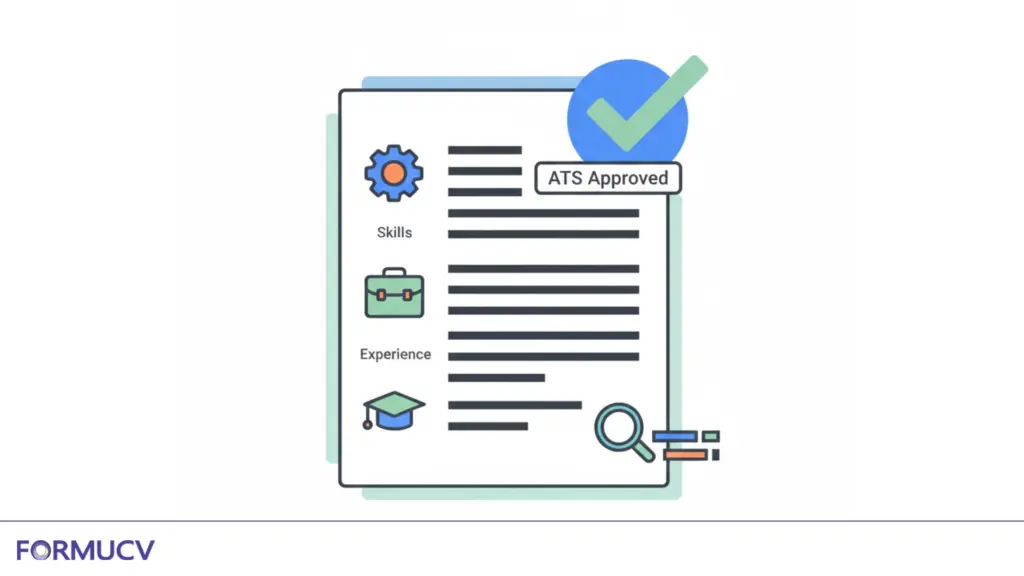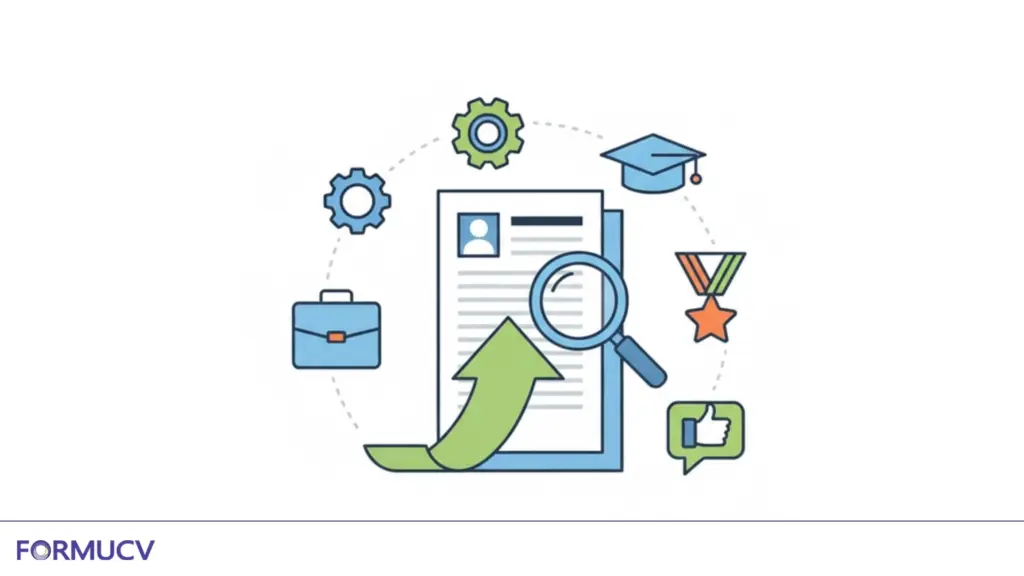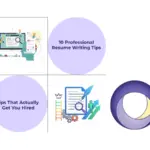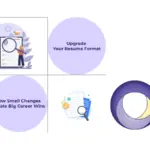
10 Smart Ways to Improve My Resume for Job Applications
We helped a friend apply for a marketing role at a tech startup a few months ago. She had great experience, but her resume was four pages long and full of useless bullet points and jargon. We changed it to one page, used precise action verbs, and highlighted measurable results. Within a week, she got three interviews. That’s what a powerful resume should be. Most people treat theirs like a chore, something to update once every few years, rather than a living document that should evolve with their career. So, if you’ve ever Googled “how to improve my resume for job applications”, you’re already on the right path in FormuCV.
Table Of Content
- 10 Ways to Improve My Resume for Job Applications
- 1. Start With the Job Description
- 2. Quantify What You’ve Done
- 3. Tell the Story That Gets You Hired, Not Your Whole Life
- 4. How do I improve my resume for job applications? Lead With Achievements, Not Duties
- 5. Format for Readability (and ATS)
- 6. Add Keywords Naturally
- 7. Highlight Transferable Skills
- 8. Improve my resume for job applications; Use Modern Tools Wisely
- 9. Customise Every Application
- 10. Ask for Feedback, and Update
- Improve my resume for job applications? Common Resume Mistakes to Avoid…
- Who Benefits Most from a Resume Overhaul?
- The Emotional Side of Resume Writing
- Final Thoughts: Your Resume Is a Living Story
10 Ways to Improve My Resume for Job Applications
Here’s how to turn your resume from “meh” to “must-call.”
1. Start With the Job Description
“Improve my resume for job applications” starts with understanding what employers want. Job postings contain clues, keywords, skill priorities, and tone.

Suppose the role asks for “cross-functional collaboration. ” Echo that phrase naturally in your experience—not word-for-word copying but alignment. Employers use Applicant Tracking Systems (ATS), and these tools scan for relevant keywords before a human ever sees your file.
Tip: Copy the job description into a word cloud generator. See which terms appear most often. Use them thoughtfully in your resume.
2. Quantify What You’ve Done
Numbers tell stories faster than adjectives.
“Improved social media engagement” sounds nice, but “boosted engagement by 43% in six months” hits harder. Data proves credibility and gives employers a sense of scale.
Even if you’re not in sales or marketing, you can quantify impact:
- Managed a team of 5
- Served 50+ clients per month
- Reduced processing errors by 12%
Small metrics add up and make your accomplishments tangible.
3. Tell the Story That Gets You Hired, Not Your Whole Life
If your resume reads like a list of everything you’ve ever done, it’s time for surgery. The best resumes don’t tell your life story; they tell your relevant story
Remember one guiding question: “Does this help me get this job?”
If not, trim it. One page is ideal for most professionals; two is acceptable if you have over ten years of experience. Employers spend an average of 7.4 seconds scanning each resume (yes, someone measured it). Every word has to earn its place.
4. How do I improve my resume for job applications? Lead With Achievements, Not Duties
Many people still write resumes that sound like job descriptions.
Instead of:
Responsible for managing marketing campaigns.
Try:
Led a cross-channel marketing campaign that increased lead generation by 25%.
See the difference? One describes responsibility. The other proves impact.
Action verbs help here: “led,” “designed,” “built,” “launched,” “negotiated.” Avoid soft verbs like “helped” or “worked on.”
5. Format for Readability (and ATS)
Design matters, not because employers care about pretty fonts, but because readability affects comprehension.

Keep your layout clean:
- Use a single, professional font (Arial, Calibri, or Helvetica).
- Bold job titles, not entire sentences.
- Avoid tables, graphics, or headers that might confuse ATS scanners.
- Save your file as a PDF unless the job description asks for Word.
Think of it this way: your resume should look good on a laptop and in an employer’s inbox preview pane.
6. Add Keywords Naturally
The phrase “improve my resume for job applications” isn’t just a search term; it’s a mindset. It means use your language to match the industry.
If you’re in IT, words like “agile,” “cloud infrastructure,” or “DevOps” matter. In marketing, it’s “conversion,” “brand strategy,” or “content performance.”
But don’t just stuff keywords for the algorithm. Write for humans first. If it reads awkwardly out loud, fix it.
7. Highlight Transferable Skills
Many job seekers switch industries, and that’s okay if you show how your skills carry over.
For example, a teacher moving into project management can emphasise communication, time management, and team coordination. Employers value adaptability as much as direct experience.
Consider a short “Core Skills” section right under your summary. Keep it to 6–8 bullet points. Focus on capabilities, not clichés like “hard-working” or “motivated.”
8. Improve my resume for job applications; Use Modern Tools Wisely
Of course, AI can help, but don’t outsource your story to a machine.
Tools like FormuCV can improve formatting, suggest phrasing, or check ATS compatibility. However, always review the output for accuracy and tone.
Remember, technology should amplify your voice, not replace it.
9. Customise Every Application
This one’s tedious, I know. But it’s the difference between sending 100 resumes and hearing crickets… or sending 10 and getting interviews.
Minor tweaks make a significant impact:
- Mirror the job title in your header.
- Reorder achievements so the most relevant ones come first.
- Update your professional summary to reflect the company’s values.
Employers can spot generic resumes instantly. Personalisation shows you care enough to do your homework.
10. Ask for Feedback, and Update
A resume evolves with you.
Please share it with colleagues, mentors, or even trusted employers. Ask what is suitable for you and what isn’t. Sometimes, an outside look shows things you’ve missed.
And don’t wait until you’re job hunting to update it. Keep a “career wins” document where you note achievements monthly. Your future self will thank you.
Improve my resume for job applications? Common Resume Mistakes to Avoid…
If you really want an answer to “How to improve my resume for job applications?, knowing what not to do helps just as much:
- Using outdated email addresses (no more Hotmail, please).
- Listing irrelevant hobbies.
- Including “References available upon request” (implied).
- Forgetting LinkedIn, your digital resume matters, too.

Little details signal professionalism. Employers notice them more than you think.
Who Benefits Most from a Resume Overhaul?
Now you know the answer to how to improve my resume for job applications?
But who benefits most from a resume overhaul? Almost everyone, but some groups gain even more:
- Recent graduates who need to turn projects and internships into proof of skill.
- Career changers pivoting industries.
- International applicants adjusting resumes for Western formats.
- Mid-career professionals looking for senior roles.
Each group faces unique challenges, but the same rule applies: you win with clarity, and a professional resume builder can help you achieve this.
The Emotional Side of Resume Writing
We don’t talk enough about the emotional labour behind resumes. Writing one forces you to confront your worth, wins, and sometimes gaps.
If it feels uncomfortable bragging about yourself, reframe it. You’re not boasting, you’re giving employers evidence to believe in you. Confidence, backed by clarity, is magnetic.
Final Thoughts: Your Resume Is a Living Story
If your resume hasn’t opened doors lately, it’s not because you’re unqualified. It’s because it’s not telling your story in the correct language.
Learn “How to improve my resume for job applications” is less about buzzwords and more about self-awareness, knowing what you’ve achieved, where you’re going, and how to express it in a page or two.
When my friend landed that marketing job, she said something that stuck with me:
“I didn’t change who I was. I just learned how to show it better.”
That’s the real goal, not perfection, but precision.
So go ahead, open that old file, and start revising. Future opportunities are waiting, beginning with the next version of your story. If you need more tips and tricks, follow FormuCV’s LinkedIn account.

